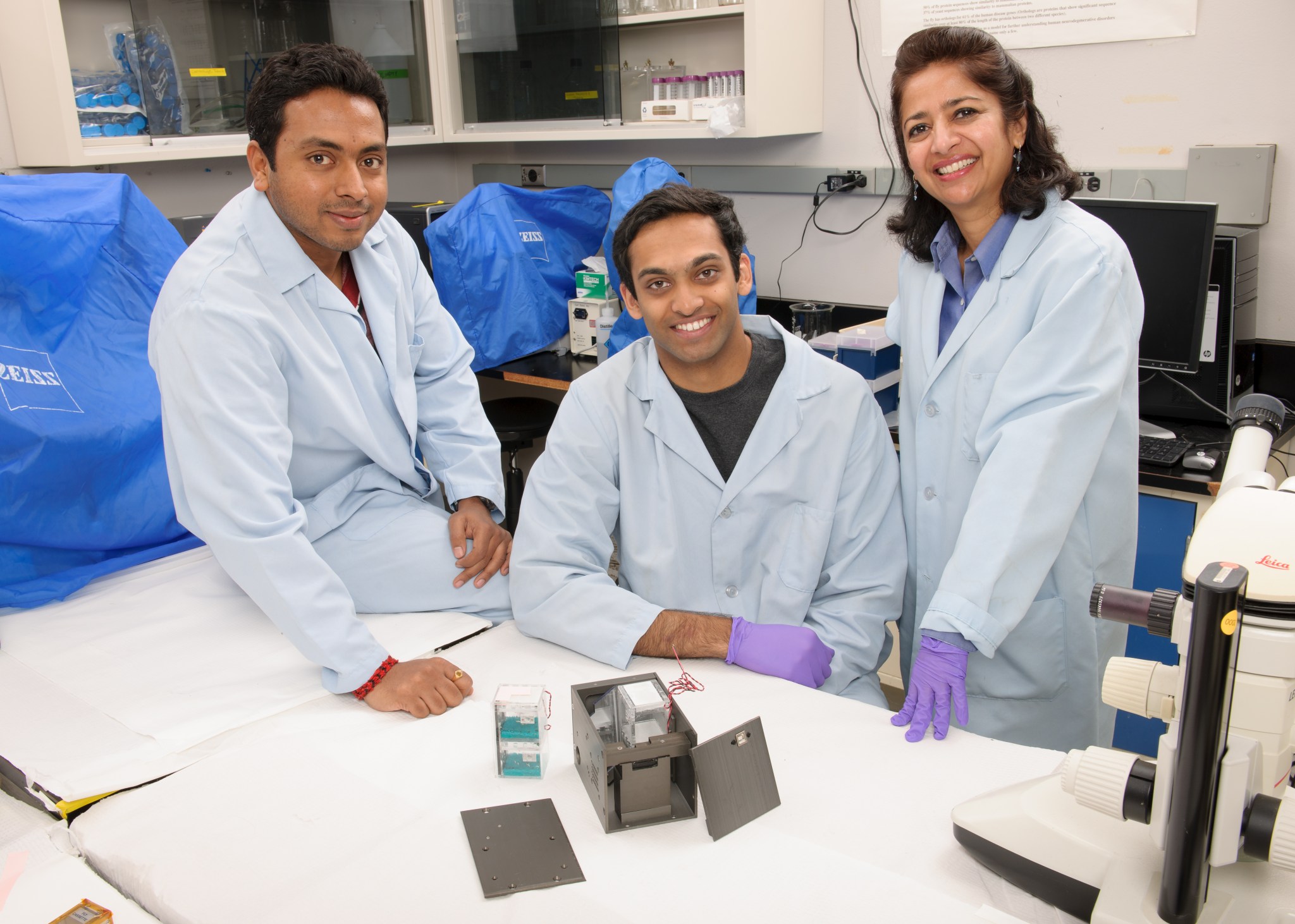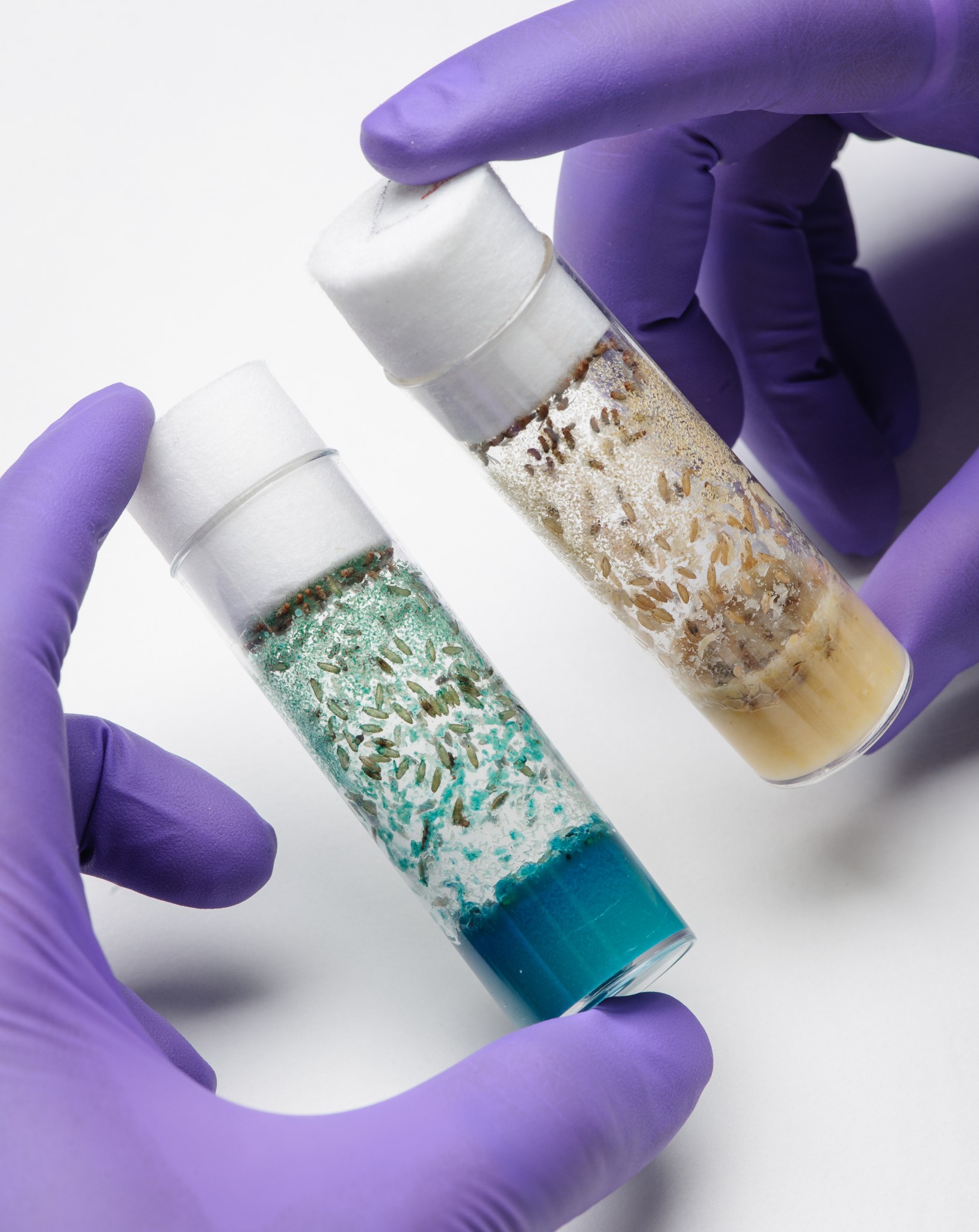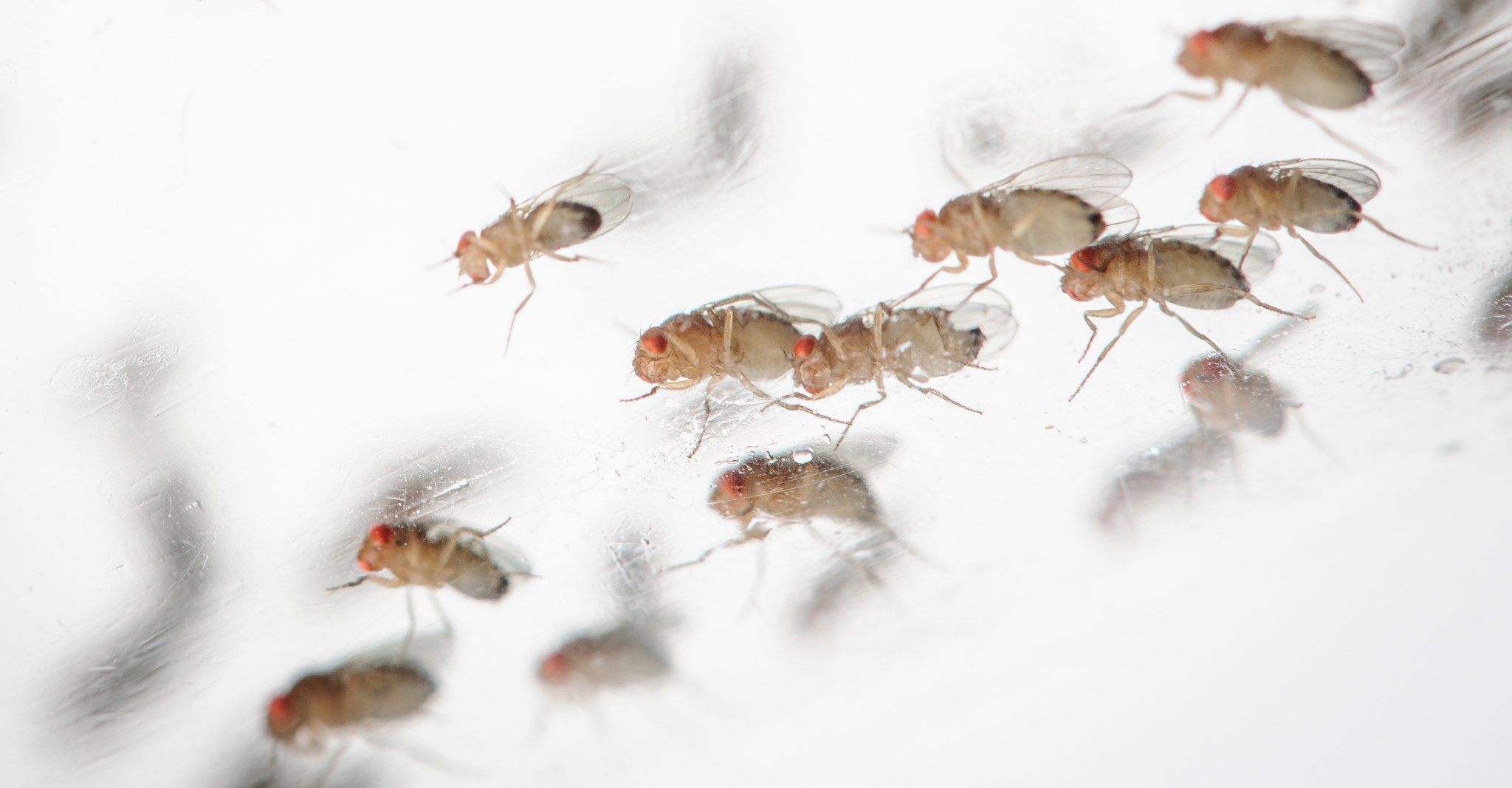If the International Space Station ever starts a “frequent flyers” program, fruit flies surely would be eligible for platinum status. Recently the orbiting laboratory has hosted increasing numbers of fruit fly research studies. One fruit fly investigation returned from the space station in April, and another is scheduled launch to the station Sept. 20. A third experiment is planned to launch in December.
Fruit flies are biomedical research models studied in laboratories around the world—and in space. Model organisms can reveal the basis for health and disease in many animals, including humans, because we share the basic biochemical machinery of life. NASA researchers study fruit flies to better understand how spaceflight affects complex living organisms.
Also known as Drosophila melanogaster, fruit flies can tell researchers much about how diseases work at the cellular and molecular levels. Researchers can apply this knowledge to develop new methods for preventing or treating human diseases on Earth and protecting astronaut health during space missions.
The flies that travel to the space station are housed in small habitats that provide all the air and food the flies need during the mission. The habitats also keep the flies contained so they do not become a buzzing annoyance to the crew.
Sharmila Bhattacharya, director of the Biomodel Performance and Behavioral Laboratory at NASA’s Ames Research Center in Moffett Field, California, leads a team that is preparing a Drosophila study for launch to the space station. Her laboratory at Ames is not just a place that tens of thousands of fruit flies call home; it also is a place where teams of students make significant contributions to spaceflight research.
The Ames student Fruit-Fly Experiment (AFEx) was initiated by the American Society for Gravitational and Space Research to give college students hands-on experience with spaceflight research. Ames, NanoRacks LLC and the Science and Technology Corporation support this project by providing technical guidance and a spaceflight opportunity to the student-led team. Since the project began, the team has included two masters-level and 10 undergraduate students who planned, designed, built and tested the AFEx payload and hardware at Ames. Bhattacharya and other scientists and engineers at Ames provided guidance and mentorship to the student team.
Spaceflight has been shown to induce oxidative stress changes in biological organisms from fruit flies to humans. Oxidative stress involves a build up of harmful molecules inside cells that can cause cell damage, and it is associated with infections and disease. The AFEx study seeks to gain a better understanding of the relationship between oxidative stress and the functioning of the nervous system. Changes in fly behavior reflect changes in the fly nervous system. By studying behavioral changes as the flies adapt to microgravity, the researchers will gain insight into how the nervous system is affected by spaceflight.
Throughout the investigation, researchers will analyze the activity levels and movements during spaceflight of two groups of flies: wild type flies and a genetic strain of fly that is oxidative stress-resistant. Movements and behavior are indicators of health status for these insects. Researchers will use video footage of the flies that will be recorded in space to track and quantitatively analyze fruit fly movements. Analysis of the flies’ behavior will allow the researchers to assess the ability of the oxidative stress-resistant genetic strain to withstand and adapt to the conditions of spaceflight.
“The Ames student Fruit-Fly Experiment will be the first experiment of its kind in that it will allow quantitative analysis of neurobehavioral information,” said Bhattacharya, “We will achieve this using a camera system with visible light and infrared detection capabilities specifically designed for Drosophila observation.”
The student-built payload—roughly half the size of a shoebox—includes a dual-chambered fly habitat, a video system for behavioral monitoring, lights, vents and fans for air circulation and sensors to measure environmental conditions. Each chamber of the habitat accommodates a separate population of fruit flies, allowing for two different Drosophila genetic strains to be studied in one experiment.
The AFEx study will launch to the station aboard the SpaceX’s fourth cargo resupply servicing mission. After docking, station crew will install the payload into a powered rack aboard the space station, where it will collect data for approximately 25 to 30 days before being returned to Earth aboard the same Dragon spacecraft.
When the Dragon spacecraft splashes down in the Pacific Ocean, the AFEx team will be waiting at the port of Long Beach, California, to collect the fly habitats that will contain a mix of live adult flies from multiple generations and younger flies at different developmental stages. The team will transport the flies back to Ames, sort the flies by age, and conduct a variety of experiments including molecular biological analyses and microbial infection tests.
Bhattacharya is also co-investigator for the Heart Flies investigation, which launched to the station in April. Heart Flies was the first biomedical research study to use fruit flies to investigate how spaceflight affects the structure and function of the heart.
Today scientists are performing sophisticated studies of Drosophila heart structure and function because the Drosophila model is excellent for learning more about the development, function and aging of the cardiovascular system. Many of the genetic and molecular mechanisms involved in heart development and function are remarkably similar between flies and mammals.
“The establishment of a spaceflight fruit fly model for studies of the cardiovascular system addresses one of the highest priority research areas to support future long duration human spaceflight,” said Bhattacharya.
Fifteen groups of fruit flies spent approximately one month in space before returning to Earth. Scientists included three wild type or “normal” strains of flies and two genetic strains that are predisposed to abnormal heart rhythms in th
e study. The researchers are investigating whether spaceflight affects the degree of abnormalities in these genetic strains.
For the Heart Flies study, Bhattacharya collaborated with Peter H.U. Lee who was at Stanford University, Stanford, California, at the time of the award and now is in the Department of Surgery at Ohio State University Wexner Medical Center; as well as Rolf Bodmer and Karen Ocorr of the Sanford-Burnham Medical Research Institute in La Jolla, California. Analysis of the data is ongoing. Bodmer and Ocorr are analyzing heart function, heart muscle structure and gene expression in the space-flown flies and comparing the results with identical groups of flies that remained on Earth.
This study was competitively selected for launch to the space station by the Space Florida International Space Station Research Competition and was supported by NanoRacks, and the Center for Advancement of Science in Space (CASIS).
After AFEx, what’s next for fruit flies in space? The maiden voyage of a new Drosophila research facility for the space station—called Fruit Fly Lab-01—is planned to launch aboard SpaceX’s fifth cargo resupply servicing mission, currently slated for December 2014. So for those fruit flies that NASA studies, there are many opportunities to rack up frequent flyer credits on trips to the space station.





























